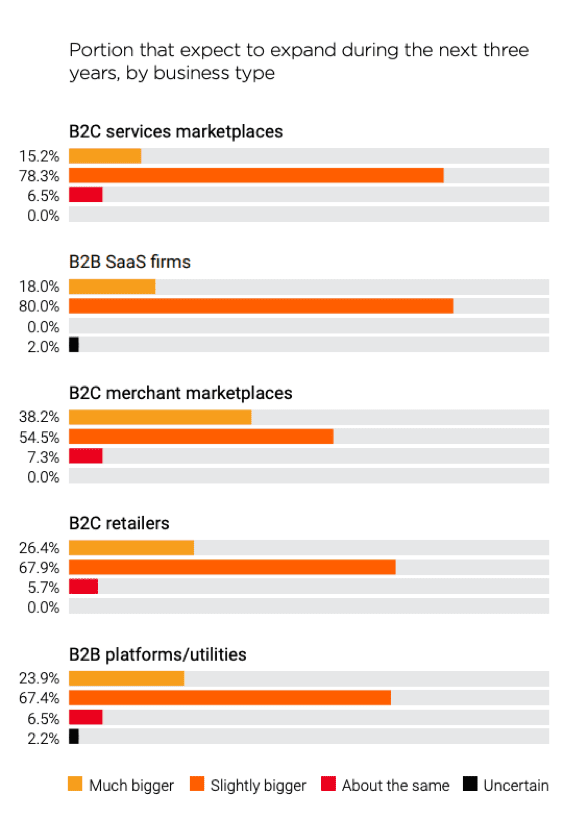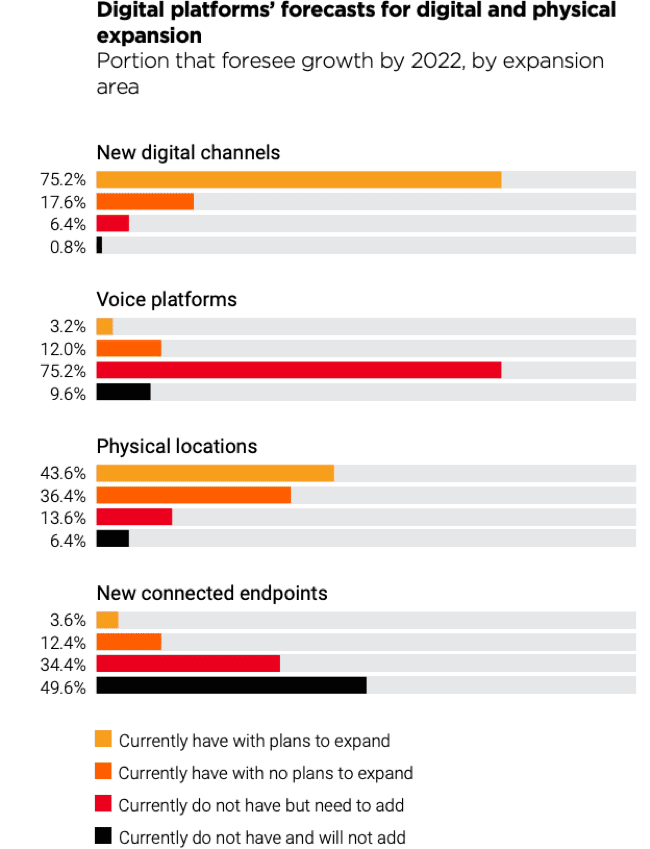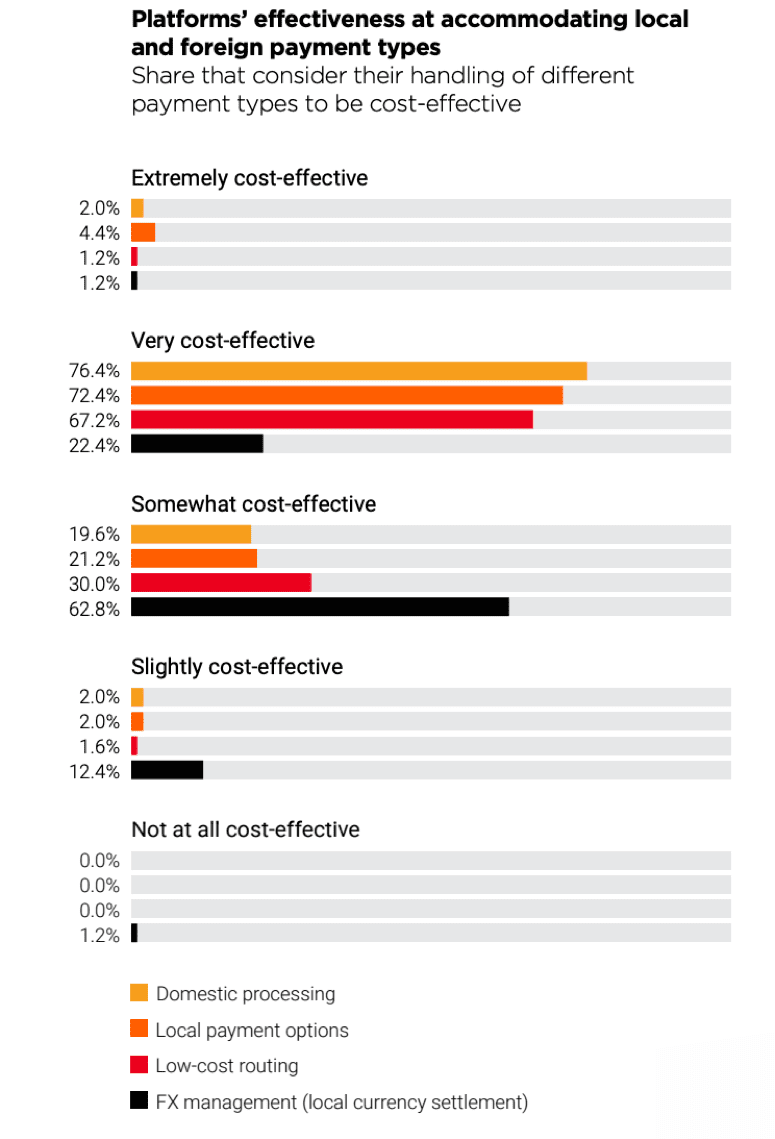Digital Platforms’ Ambitious Growth Plans

Digital platforms are the backbone of marketplaces and service providers used by millions daily. Payment capabilities, coupled with rapid mobile adoption, have contributed to their rapid growth. According to a new PYMNTS study, Payments 2022, conducted in conjunction with Stripe, in just five years digital platforms are expected to collectively account for $60 trillion in revenue.
In Q1 2019, 250 heads of digital platforms were surveyed. These platforms spanned segments including business-to-business (B2B), business-to-consumer (B2C), B2B Software-as-a-Service (SaaS) firms, B2C merchant marketplaces, B2C retailers and B2B platforms/utilities.
Imagining a three-year roadmap, most digital platforms have ambitious growth plans: 69.2 percent said they plan to be slightly bigger by 2022, while one-quarter (24.8 percent) predict they will become much bigger.
B2C merchant marketplaces like Etsy and Airbnb were the most optimistic among business types; 93.5 percent saw themselves growing. No one imagined they would shrink, but B2B SaaS firms and B2B platforms/utilities were the most uncertain about the near future.

Nearly all (94.0 percent) of the platforms said they planned to expand geographically in the next three years. The top regions for expansion were U.S. neighbors. Nearly half (49.6 percent) weren’t currently in Canada but wanted to expand there, and 58.0 percent said the same of Mexico.
Expansion also included new capabilities and channels. Sixty-one percent of the platforms in the study said they have plans to add more payments processing platforms in the near future. The top reason (84.9 percent) for adding more payments platforms was to facilitate the abovementioned geographic expansion, followed by the ability to offer customers more options (80.9 percent) and to expand the number of currencies (64.5 percent), which also speaks to expanding into new regions.
Around three-quarters have digital channels and wish to expand them. Voice recognition like Amazon’s Alexa was the offering with the lowest current adoption but the highest future plans (75.2 percent). Offline expansion was also in the cards for 43.6 percent.

What will enable these expansions? According to 75 percent of platforms, implementing real-time payments capabilities is key.
On the bright side, only 2 percent cited complications with real-time payments as a barrier. Most (30 percent) mentioned payment processing generally, while data security (19.2 percent) and cross-border payments (10.8 percent) also posed problems.
Thanks to the growth of digital commerce, cross-border shopping has become easier for consumers, but facilitating cross-border payments can be complicated – and costly –for merchants.
Most of the platforms (62.8 percent) say their payment platforms are “somewhat” cost-effective for foreign exchange (FX) management. They give themselves higher marks on local payment options and domestic processing.

Many regional coalitions have sprung up to facilitate cross-border payments, like the European Payments Council launching the pan-European SEPA Instant Credit Transfer (SCT), while Southeast Asian countries like Thailand, Vietnam, Malaysia, Singapore and Indonesia have agreed to interconnect their real-time payments networks.
The U.S. is not a member of similar partnerships, so cross-border payments will likely be the domain of private companies like Ripple that use blockchain technology.
A good deal of the platforms included in the study were U.S.-based, so 61 percent of companies surveyed earn less than 40 percent of their annual revenue from non-U.S. customers. By segment, the companies with the most revenue coming from foreign customers were B2B platforms/utilities like Shopify or DocuSign, and B2C services/marketplaces like TaskRabbit or Lyft.
Earlier this month, Amazon announced the closure of its China marketplace, Amazon.cn, which facilitated buying and selling among Chinese consumers. and will shift its focus to cross-border eCommerce. While Amazon dominates in the U.S., Amazon China only had around 6 percent of imports in the country in 2018, according to iResearch.
U.S. startups are still trying to court the lucrative Chinese market, though. Earlier this year, Allbirds, known for its wool sneakers, launched a brick-and-mortar shop in Shanghai and began selling online via Tmall. This move reinforces the survey participants’ expansion plans through both digital and physical channels.
